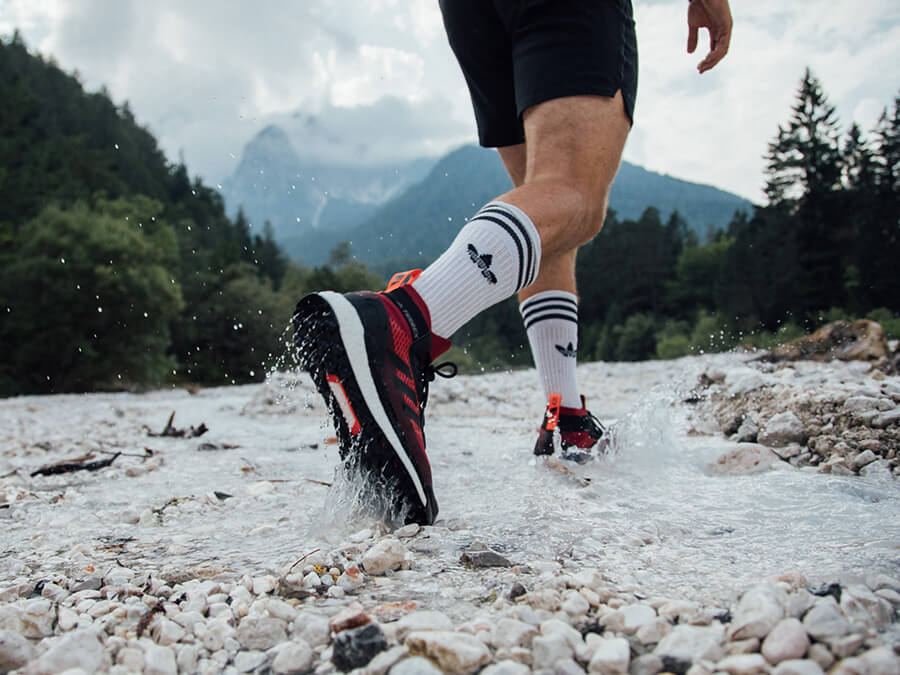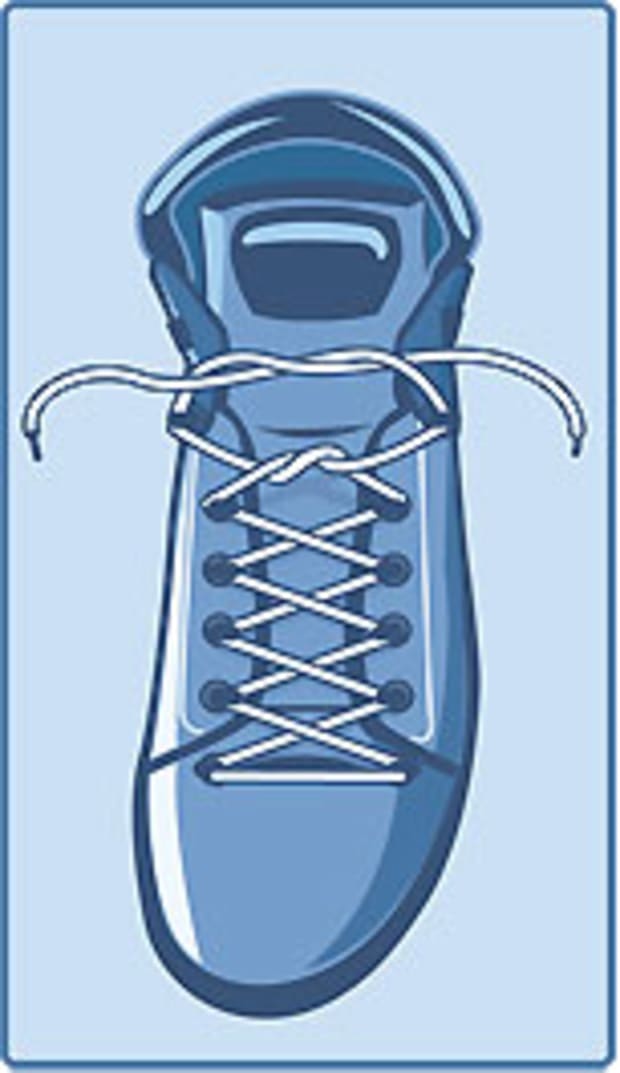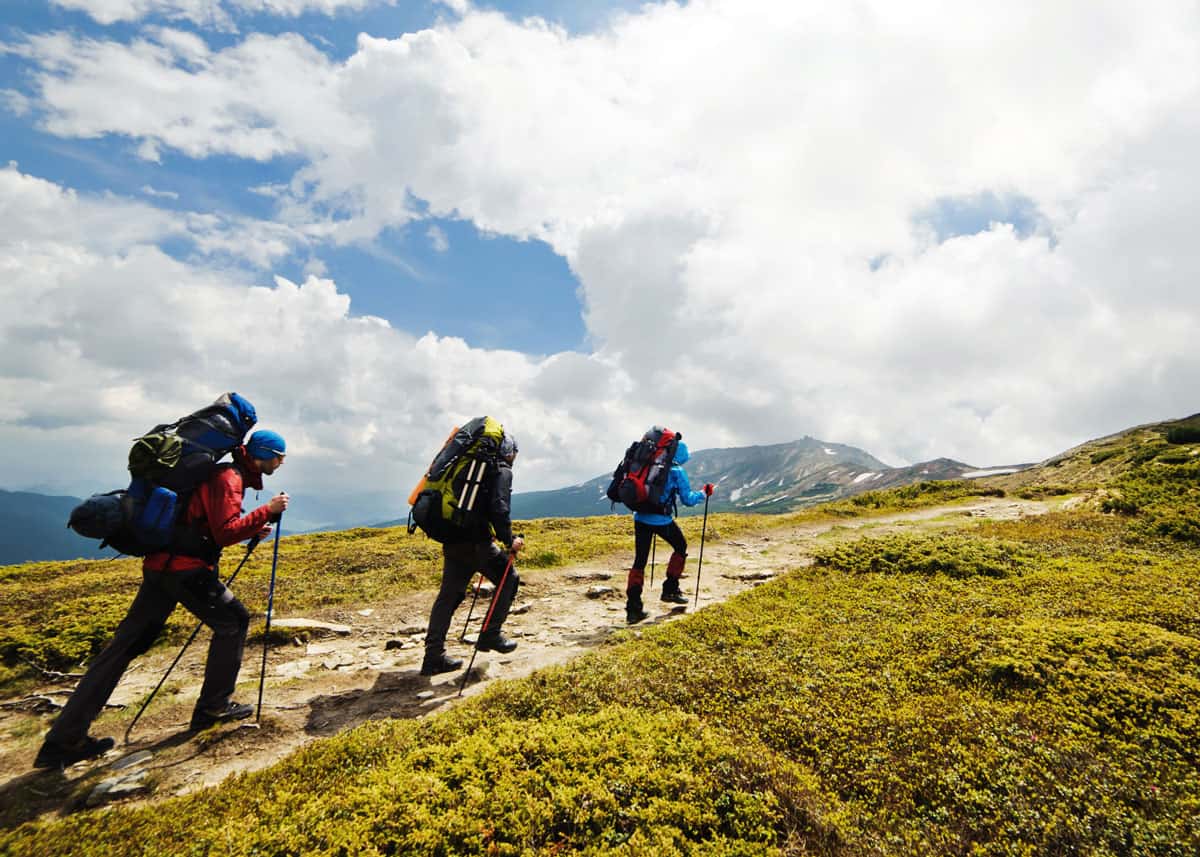Hiking is an excellent low-impact workout. Studies show it offers multiple physical and mental benefits. From reducing anxiety to preventing osteoporosis, hiking is an outdoor activity delivering benefits beyond scenic and fun.
Unlike walking on a treadmill or paved path, hiking involves more, sometimes unpredictable, variables. Of course, these variables are part of what makes it so enjoyable! Use the following hiking tips to make your first treks successful:
Navigate Off-Trail With a Compass
Step 1: Adjust for Declination
Declination is simply the difference between magnetic north (where the compass needle points) and true north (the North Pole, and the direction maps are oriented). To navigate accurately, just check the margin of your map for the declination (12 degrees east, for instance) and adjust your compass accordingly (most have a simple dial). No dial? No problem. If the declination is east, subtract the degrees from the magnetic north bearing to get the true bearing; if it's west, add the degrees (easy mnemonic device: East is least, west is best).
Step 2: Orient Your Map
Lay the straight edge of your compass on the map so that its true north bearing is parallel to the map's true north grid lines. Rotate the map and compass together until the compass points due north.
Step 3: Take a Bearing
Let's say your destination is a spectacular lakeside campsite two miles off the beaten path. You can see it on your map–but not from the trail. To get there, lay the straight edge of your compass base plate on the map so it connects your present location with the lake. Turn the compass housing until its meridian lines match the north-south lines on the map (make sure the arrow is pointing to the top of the map, or you'll be 180 degrees off). The direction indicated at the compass's direction of travel arrow is the route you need to take to reach the lake.
Step 4: Navigate Around Obstacles
In the real world, obstacles like canyons and cliffs can get in the way of your straight line bearing. Here's how to go around without getting off track: With your compass in hand, sight an object–like a tree or boulder–that is beyond the obstacle and lies on the straight line to your destination. Hike to that object by the easiest route, then resume traveling along your original bearing.

Stay Dry in a Downpour
- Pop an umbrella and open every vent and pit zip.
- Make sure the cuffs of your baselayer aren't exposed, or they'll wick moisture up your sleeves.
- Keep your jacket hem cinched snugly and shield your face by pulling your hood over a billed cap.
- In wet brush, wear rain pants over gaiters.
- Don't get wet from the inside out. If you're overheating, minimize sweat by shedding layers or slowing your pace.
Descend Safely
Nothing is harder on the knees than hiking downhill on steep terrain while wearing a heavy pack. To avoid injury:
1) Make sure your hip, knee, and foot are aligned when stepping off or over big ledges. This protects you from rolling an ankle and takes the strain off your leg muscles and joints.
2) Keep your knee slightly bent as you transfer weight onto the downhill leg, which allows your muscles–not the joint–to absorb the impact.
3) Use the "double plant" when stepping off huge ledges: With hands firmly grasping the tops of the handles, place both of your trekking poles simultaneously on either side of the spot where you'll be putting your foot. Lower yourself slowly, using the poles like crutches.
Beat Fatigue on Steep Climbs
When high altitude and big mountains take their toll, use the "rest step." With each stride, lock your downhill knee, shifting the weight momentarily onto that back leg. This puts your weight on your bones for a moment, allowing your leg muscles to relax. As you take your next step, transfer your weight to the uphill leg and let momentum swing your downhill foot forward. Repeat. Inhale deeply as you step up; exhale deeply as you pause in the rest step. If you're feeling especially winded, try "pressure breathing": Exhale forcefully through pursed lips as if you're blowing out a candle to push oxygen from the alveoli to the bloodstream.
Read a Rattlesnake's Body Language
- Coiled, with tail parallel to ground: All clear–it's just hanging out
- Coiled, with tail in the air: On the prowl, looking for mice
- Rattle up, head and upper body raised off the ground: Ready to strike. Slowly back away!
Predict Weather With an Altimeter
The altimeter on your watch gauges altitude by measuring air pressure: Falling pressure means you're climbing, and rising pressure translates to going downhill. Dropping air pressure usually indicates an approaching storm system, while a rise in pressure means the weather is clearing. So if your altimeter says you're hiking uphill and you're not, pull out the rain shell: Foul weather is likely headed your way.
Identify a Mountain Lion Track
- Heels: Cougars have three lobes on the hind edge of the heel pad, while dogs have just two. Lion tracks also have two points on the leading edge of the pad; dogs have a single leading edge.
- Front toes One of the cougar's middle toe pads is in front of the others. A dog's toe pads are side-by-side.
- Claws Lion tracks don't show claw marks, unless the cat was running. Dog tracks usually do.
5 Ways to Navigate Without a Compass
1) Sun Hold an analog watch flat, with the hour hand pointing to the sun. South is halfway between the hour hand and 12. (Note: Only works in the Northern Hemisphere.)
2) Shadows Stand a 3-foot stick vertically in the ground and mark the tip of its shadow with a rock. Wait at least 15 minutes, then mark the shadow again. The line connecting the two roughly coincides with the east-west line.
3) Stars Find the Big Dipper. Follow an imaginary line drawn through the two stars at the end of the cup and extending into the sky to a medium-bright star–this is Polaris, the North Star.
4) Moon Watch the sky. If the crescent moon rises before sunset, its illuminated side will face west. If it rises after midnight, the brighter side faces east.
5) Plants In Eastern and Midwestern prairies, find the bright-yellow bloom of a compass plant. In sunny spots, its leaves generally align themselves along the north-south line.
Lace Your Boots for Maximum Comfort
This method leaves wiggle room for toes and swelling feet, but still keeps the heel locked in place.
1) Lace boots normally, but don't pull tight.
2) Tie a snug overhand loop at the ankle to create a locking twist, then wrap laces around eyelets.
3) Repeat the single overhand loop at each pair of eyelets.
4) If the boots feel too tight while hiking, relieve pressure by skipping a pair of eyelets near the top.
Take a Perfect Summit Photo
Bright sky, snow, and shadows make hero shots hard to capture. Here's how to do it:
- Forget about horizons and sky. Put your buddy slightly down from the summit–10 to 15 feet below the actual top–or near a cliff edge with a superb background.
- Get above him and shoot downward, so you include your friend, the scenery behind him, and just a tiny strip of sky in the upper background. You'll get the incredible setting, plus a sense of height and exposure.
- If you can't resist the standard Tenzing-against-the-sky photo, set your camera's exposure compensation meter to one or two stops of overexposure (+1 or +2). That way his face won't be a dark blob.


